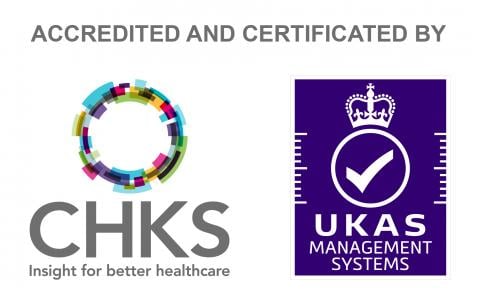
Wimbledon will be buzzing with action this month with traffic and visitors from all over the world. Tennis is a popular international sport played by millions at various levels and, as with any sport, there are a number of injuries associated with it that increases during peak time. This tennis season, Consultant Orthopaedic Surgeon, Mr Pal Ramesh, talks to you about lower limb injuries obtained on the court and what you can do to both manage and prevent them.
Lower limb injuries from the court
Whilst many of us want to be active and stay in shape, increasing your activity level without taking care of your body will inevitably bring on a number of issues. Two grievances, namely, tennis elbow and rotator cuff injuries are rife amongst tennis enthusiasts, along with lesser known lower limb injuries.
Lower limb injuries can be grouped into acute and chronic or repetitive ailments. Foot and ankle complaints include:
- Ankle sprains
- Calf muscle strains and tears
- Stress fractures and acute fractures
- Achilles Tendon Rupture
- Mueller Weiss Syndrome
Ankle sprains
You might experience an ankle sprain or a foot fracture after a sudden multidirectional movement change or an ankle inversion. The Metatarsals and Ankle bones are the common bones involved in this type of breakage.
An ankle sprain occurs when your ligaments overstretch. Physiotherapy helps to ease symptoms but if you are suffering with symptomatic instability you may need ankle surgery. This would involve repairing or reconstructing the lateral ligament complex.
Calf muscle strains or Tennis leg
Tennis leg is particularly common amongst 40-60 year olds. This injury is felt as a sudden sharp pain or a tearing sensation in your calf muscle.
Most of these injuries only occur half way down the calf and might affect the soleus (the smaller muscle in the calf) and the gastrocnemius (the larger muscle).
You might notice swelling in your calf during a tennis match or feel like you have been kicked. Treatment options for this kind of injury often involve pain medication.
Stress fractures
This type of fracture increased during the lockdown. Stress fractures are small cracks in the bones occurring most frequently in your shin or foot. Pain develops over the course of a few weeks and can intensify whilst resting.
You might experience swelling in the affected bone, pain, redness and inflammation which can mimic infection and reduce your ability to run or play tennis.
These occur either when your bone is subject to excessive force or if your bone is of poor quality, encumbering your day to day activities.
The Stress response
Occasionally, patients have mild symptoms with no signs of a clear fracture such as internal bruising and swelling of the bones. This is known as a stress response, an injury that is usually lower level compared with the stress fracture.
Low Vitamin D levels can be a contributing factor to the stress response and currently there is sustained emphasis on maintaining your vitamin D levels. Nevertheless, the diagnostics of these elusive injuries can also be aided with newer scans such as MRI and are often found to be caused by contusion and blunt trauma.
Mueller Weiss Syndrome
This disease, also called Brailsford disease, is common in women over 40 and includes intense pain and a marked flat foot. Tennis player Rafael Nadal was most recently affected by this syndrome. It degenerates the tarsal navicular in the middle of the foot and surgery is often needed.
Achilles Tendon Rupture
Achilles tendons ruptures are categorised into muscle tears, and partial or complete tendon tears.
A partial plaster or a boot with a number of heel wedges can be used as an initial treatment. At this stage, you will be informed about your treatments options which include non-operative and surgical treatment.
Clinical assessments such as a dynamic ultrasound test will confirm the extent of and gap in your tear whilst a calf squeeze will examine foot movement.
How the spot an Achilles Tendon Rupture
Your Achilles tendon will support a significant amount of force. When put under sudden loading, especially after a break from activities, it will struggle to function as usual. Frequent pivots, a change of direction, and sudden acceleration and deceleration, frequent in tennis, all put the Achilles tendon under a huge amount of strain.
The three muscles in the calf (medial, lateral Gastrocnemius, and soleus) form the Achilles’ tendon, which is attached to your heel bone. It is the strongest tendon in the body, yet prone to injury. The mechanism of the Achilles tendon tear during tennis is that of a push- off phase or sudden dorsiflexion of your ankle joint.
Your Achilles tendon tear may be quite dramatic with a snap, a sudden giving way of your leg, or a sense of 'being shot'. Surgeons frequently hear the same account from patients – that is, upon rupture, the patient expects to find a racquet thrown at their leg.
Upon impact you most likely won’t be able to continue to play, but surprisingly, you might continue to walk or limp. This lack of connection between your knee and your ankle can be disconcerting; ruptures can go unnoticed, especially if swelling and bruising occur a little later.
Patients who have pre-existing tendonitis (repetitive spraining and healing of the tendon due to overuse) are also susceptible to tearing. Furthermore, steroid injections around the tendon can also cause rupture.
Recent evidence suggests both treatment options are good, however, your case should be individually considered according to your level of function and your decision.
Generally, injury will reduce over the course of a few weeks and recovery time varies between 6-10 weeks.
Top tips to avoid injury on the tennis court this summer
The best preventative measure you can take to avoid injury this summer is to really focus on your warm-up and ease back into a routine, particularly if you have taken a break from practising tennis.
Here are some of our top tips to prevent lower limb injuries the next time you step onto the court.
- Practice regular stretching
- Take part in proprioceptive training and exercises.
- Invest in adequate tennis gear
- Employ the correct technique
- Take part in mobility drills
If you are concerned about any sports injuries, you can speak to one of our specialist Orthopaedic Surgeons. Call us on 020 8949 9020 or fill in our online form.












